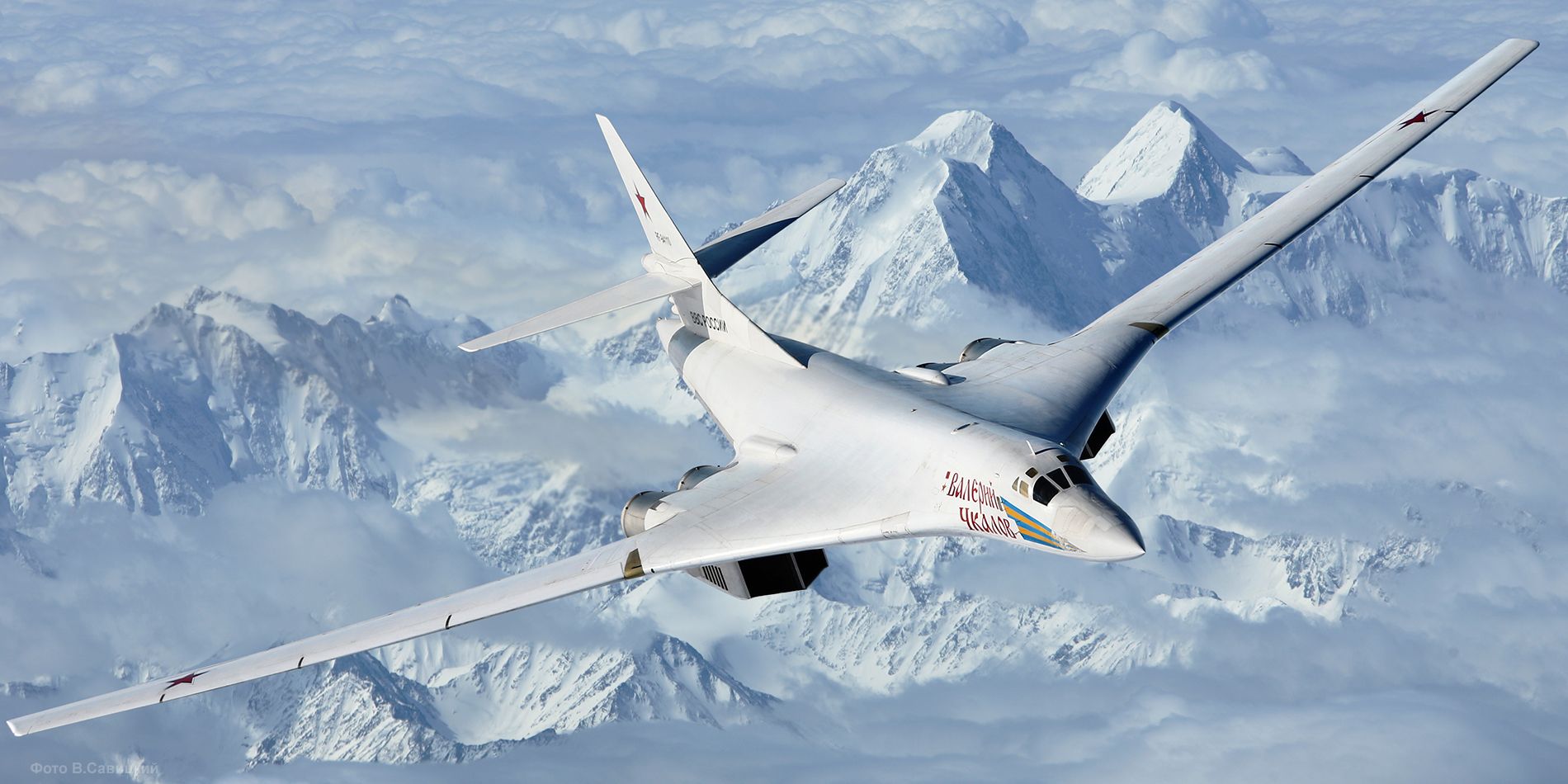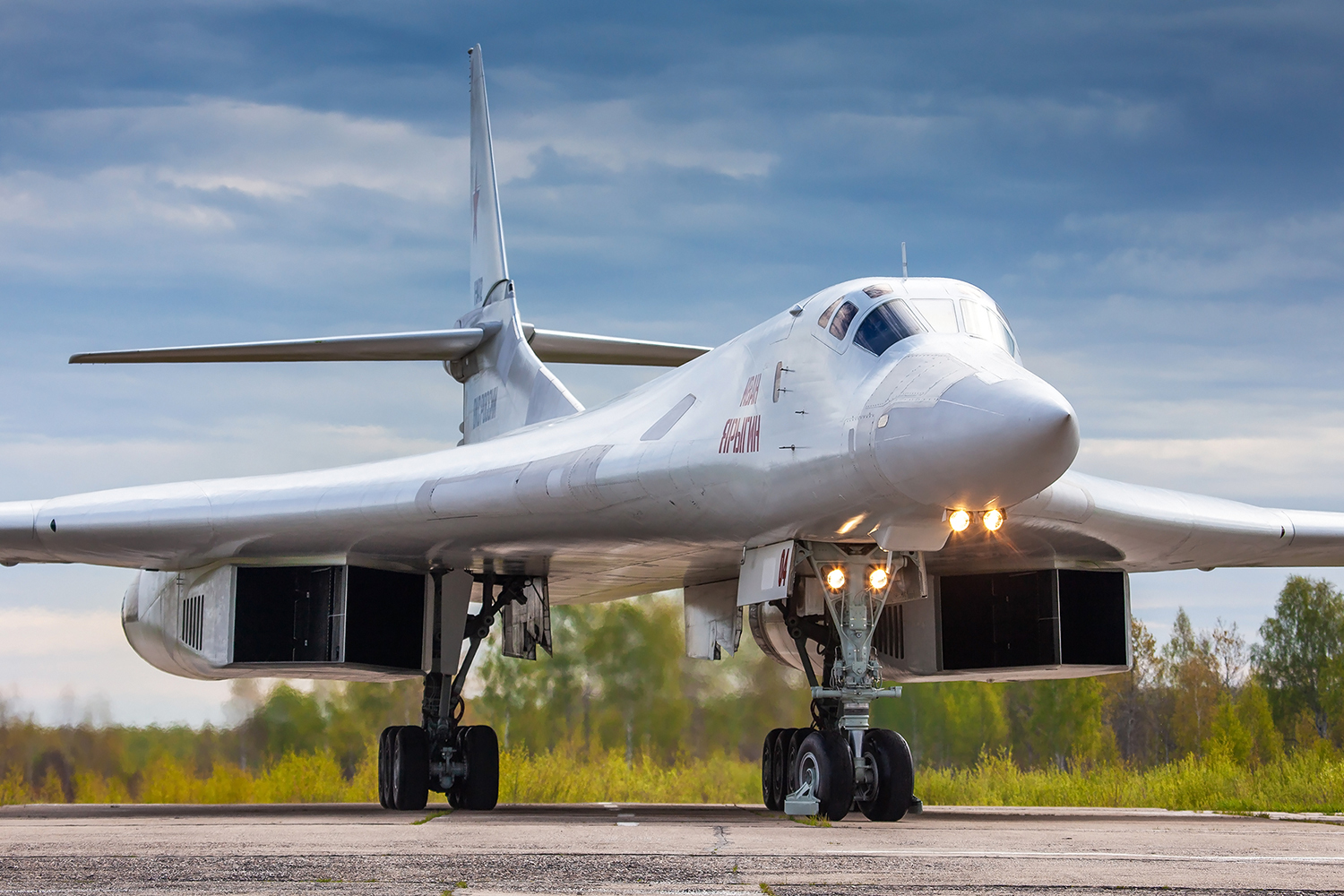United Aircraft Corporation of Russia, part of the state corporation Rostec, announced earlier this week that a second Tupolev Tu-160M strategic missile-carrying bomber took to the skies for the first time following the upgrade.
In a statement, the UAC press office said, “Another upgraded Tu-160M strategic missile-carrying bomber developed by the Tupolev Company performed its debut flight,” TASS reported.
The aircraft reportedly carried out maneuvers that allowed for the testing of its airborne controllability and stability. The pilots also verified the quality of the onboard radio-electronic equipment and demonstrated how the aircraft’s systems and engines operated.
In January this year, a brand-new Tupolev Tu-160M strategic missile-carrying bomber took its first flight. The aircraft took off from the Kazan Aviation Enterprise’s aerodrome, a Tupolev Company division.
At the time, the newly built strategic bomber completed a 30-minute flight at 600 meters. The press office had then notified that the Tupolev Company’s test pilot team performed maneuvers that allowed them to observe the steadiness and control of the aircraft’s flight.
The Tu-160M is an upgraded variant of the Tu-160 bomber. It is the backbone of the Russian Aerospace Force’s long-range aircraft, along with Tu-95MS bombers. The VKS has used these bombers in the ongoing conflict to strike targets deep inside Ukraine.
The Tu-160 entered service in the Soviet Union in the late 1980s and remained in production until 1995.
To improve the strategic bomber capabilities of the VKS at a time of rising tension with the West and to make up for delays in the PAK-DA bomber program, Russian President Vladimir Putin ordered the manufacturing of Tu-160M in 2015.
Incidentally, the Tu-160M took its first flight weeks after Russia’s Engels Air Base in the Saratov region and the Dyagilevo Air Force Base in Ryazan came under attack allegedly by Ukrainian drones. These Air Bases, located deep inside Russian territory, house the Tu-95 and Tu-160 strategic bombers.

What Do We Know About The White Swans?
The Tu-160M is designed to use nuclear and conventional armaments to attack enemy targets in distant locations. According to Russian media, the Tu-160M is currently the biggest military supersonic aircraft.
The brightly white reflective coating that covers the whole airframe gave the plane the moniker “White Swan.” Although it provides the plane with a sleek and elegant appearance, the coating was created to protect the crew if the nuclear payload was launched.
During a nuclear explosion, the coating might theoretically reflect some of the thermal energy (light).
In addition to modernizing 16 existing Tu-160 bombers, Russia expects to purchase roughly 50 Tu-160M aircraft eventually. The serial production of the updated bomber is scheduled to start in 2023, with a minimum production rate of three aircraft per year.
This would be consistent with the order for ten aircraft for 2023–2027.

The Tu-160M upgrade is being implemented in two stages, the first of which included the removal of some older systems, such as bomb sighting systems, and the installation of the new K-042K-1 navigation system and ABSU-200-1 autopilot. The air force has been using this Tu-160M1 type since late 2014.
The updated NK-32 engines (named NK-32-02), the new Novella NV1.70 radar, a computerized “glass” cockpit, contemporary communications and anti-jamming gear, and contemporary conventional and nuclear weaponry are all part of the second Tu-160M2 phase.
With nearly 55,000 pounds of thrust produced at full afterburner, the Kuznetsov NK-32 engine, which was initially fitted to the Tu-160, is frequently regarded as the most potent combat aircraft engine.
The Tu-160M is reportedly armed with X-101 family cruise missiles that have both conventional (high-explosive, high-explosive, cluster, volumetric detonating) and nuclear (X-102) warheads.
These missiles can fit in 12 slots on the aircraft. According to some sources, a Tu-160 missile-carrying aircraft specially modified for this role was used to launch the first combat tests of these missiles in Syria.
With the PAK-DA still in the design and development stage and the imbalance created by the American unveiling of its next-generation B-21 Raider bomber, the Tu-160M White Swan will likely bolster the Russian fleet significantly.
- Contact the author at sakshi.tiwari9555 (at) gmail.com
- Follow EurAsian Times on Google News





